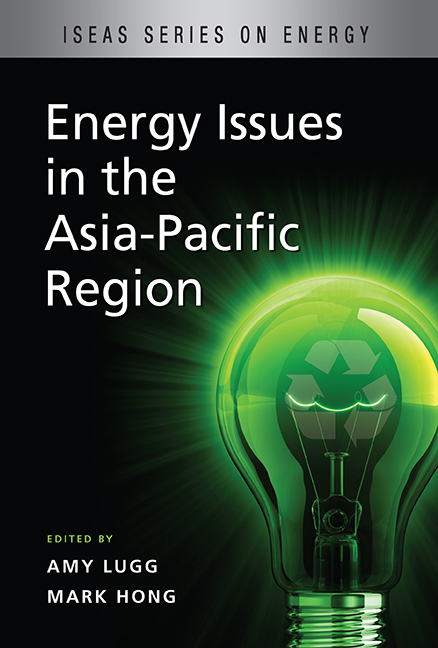Book contents
- Frontmatter
- Contents
- Foreword
- Preface
- The Editors
- The Contributors
- SOUTHEAST ASIA
- 1 The ASEAN Countries' Interest in Asian Energy Security
- 2 Biofuels Development and Prospects in the Philippines
- 3 The Biofuels Industry in Indonesia: Opportunities and Challenges
- 4 An Overview of the Cambodian Energy Sector
- INDIA
- CHINA
- UNITED STATES
- JAPAN
- ALTERNATIVE ENERGY SOLUTIONS
- Index
4 - An Overview of the Cambodian Energy Sector
from SOUTHEAST ASIA
Published online by Cambridge University Press: 21 October 2015
- Frontmatter
- Contents
- Foreword
- Preface
- The Editors
- The Contributors
- SOUTHEAST ASIA
- 1 The ASEAN Countries' Interest in Asian Energy Security
- 2 Biofuels Development and Prospects in the Philippines
- 3 The Biofuels Industry in Indonesia: Opportunities and Challenges
- 4 An Overview of the Cambodian Energy Sector
- INDIA
- CHINA
- UNITED STATES
- JAPAN
- ALTERNATIVE ENERGY SOLUTIONS
- Index
Summary
ABSTRACT
Cambodia's power sector has been severely damaged by years of war and neglect. Since 1993, the government has started to restore the electricity infrastructure with support from the World Bank, the Asian Development Bank, Japan, France, and other donor countries. The 2007 statistics show that per capita consumption is about 100 kWh per year. Only 16.4 per cent of households have access to electricity, the lowest electrification rate in Asia. Electricity costs in Cambodia remain one of the highest in the world due to the reliance on imported fuels and the lack of a grid system.
INTRODUCTION
Cambodia's public electricity supply at present comprises twenty-six small, isolated power systems that serve Phnom Penh and the capitals of the provinces. The largest system is in Phnom Penh, which has a population of around 1.4 million. In 2007, the system in Phnom Penh had a maximum output capacity of 243 MW with an actual installed capacity of 270 MW, out of which 224.4 MW was provided by Independent Power Producers (IPPs) and 45.6 MW was supplied by the state-owned power stations. The total output capacity for provincial capitals is estimated at 50 MW, with sizes ranging from 1MW to 10MW. Cambodia imports 95 MW of electricity from Thailand for the three northwestern provinces and 9.25 MW from Vietnam for the northeastern provinces.
ELECTRICITY DEMAND GROWS
According to the 2007 Power Development Plan of Cambodia, electricity demand is expected to increase significantly in the next fourteen years. Electricity generation is projected to grow from 808 MW and 1,550 GWh in 2009 to 3,867 MW and 8,300 GWh in 2020. The Government of Cambodia has intensified its efforts in enhancing energy resources and infrastructure development in order, firstly, to provide stable and affordable supplies of energy; secondly, to meet the rise in energy demand as the key element of fuelling national economic growth; thirdly, to provide adequate supplies of electricity to the rural areas and to improve the electrification ratio; fourthly, to tap sustainable sources of clean energy in order to offset the great increases in oil and gas prices in recent years.
- Type
- Chapter
- Information
- Energy Issues in the Asia-Pacific Region , pp. 62 - 100Publisher: ISEAS–Yusof Ishak InstitutePrint publication year: 2010

